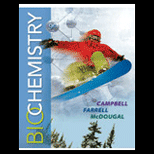
Concept explainers
RECALL What advantages does fluorescent labeling offer over radioactive methods of labeling DNA?
Interpretation:
The advantages of fluorescent labeling over radioactive labeling of DNA is to be determined.
Concept introduction:
Two methods are used to detect or visualize DNA fragments.
Radioactive labeling: labeling of DNA molecule with radioactive isotopes of phosphorus
Florescence: labeling of DNA molecule with fluorescent molecules of ethidium bromide.
Answer to Problem 1RE
Solution: In fluorescent labeling of a DNA molecule, fluorescent molecules of ethidium bromide are used. This fluorescent tag is safe, can be decomposed easily, and no special license for its use is needed.
Explanation of Solution
Two methods are used to detect or visualize DNA fragments. In radioactive labeling of DNA molecule, radioactive isotopes of phosphorus
Since in radioactive labeling, radioactive molecule is used, which is unsafe, special license is needed to carry out the experiment. Also, special techniques are required that can be used to decompose the radioactive waste. But all these things are not needed in the case of fluorescent labeling.
Thus, fluorescent tag is safe, can be decomposed easily, and no special license is needed for its use.
The fluorescent tag is safe, can be decomposed easily, and no special license is needed for its use.
Want to see more full solutions like this?
Chapter 13 Solutions
Bundle: Biochemistry, Loose-leaf Version, 9th + Owlv2,1 Term Printed Access Card
- The following data were recorded for the enzyme catalyzed conversion of S -> P. Question: Estimate the Vmax and Km. What would be the rate at 2.5 and 5.0 x 10-5 M [S] ?arrow_forwardPlease helparrow_forwardThe following data were recorded for the enzyme catalyzed conversion of S -> P Question: what would the rate be at 5.0 x 10-5 M [S] and the enzyme concentration was doubled? Also, the rate given in the table is from product accumulation after 10 minuets of reaction time. Verify these rates represent a true initial rate (less than 5% turnover). Please helparrow_forward
- The following data was obtained on isocitrate lyase from an algal species. Identify the reaction catalyzed by this enzyme, deduce the KM and Vmax , and determine the nature of the inhibition by oxaloacetate. Please helparrow_forwardIn the table below, there are sketches of four crystals made of positively-charged cations and negatively-charged anions. Rank these crystals in decreasing order of stability (or equivalently increasing order of energy). That is, select "1" below the most stable (lowest energy) crystal. Select "2" below the next most stable (next lowest energy) crystal, and so forth. A B 鹽 (Choose one) +2 C +2 +2 (Choose one) D 鹽雞 (Choose one) (Choose one)arrow_forward1. Draw the structures for the fats A. 16:2: w-3 and B. 18:3:49,12,15 2. Name each of the molecules below (image attached)arrow_forward
- draw the structures for the fats A. 16:2:w-3 B 18:3:9,12,15arrow_forward1. Below is a template strand of DNA. Show the mRNA and protein that would result. label the ends of the molecules ( refer to attached image)arrow_forwardAttach the followina labels to the diagram below: helicase, single stranded binding proteins, lagging strand, leading strand, DNA polymerase, primase, 5' ends (3), 3' ends (3) (image attached)arrow_forward
- 1. How much energy in terms of ATP can be obtained from tristearin (stearate is 18:0) Show steps pleasearrow_forwardMultiple choice urgent!!arrow_forward1. Write the transamination reaction for alanine. Indicate what happens next to each of the molecules in the reaction, and under what conditions it happens. 2.arrow_forward
 BiochemistryBiochemistryISBN:9781305961135Author:Mary K. Campbell, Shawn O. Farrell, Owen M. McDougalPublisher:Cengage Learning
BiochemistryBiochemistryISBN:9781305961135Author:Mary K. Campbell, Shawn O. Farrell, Owen M. McDougalPublisher:Cengage Learning
